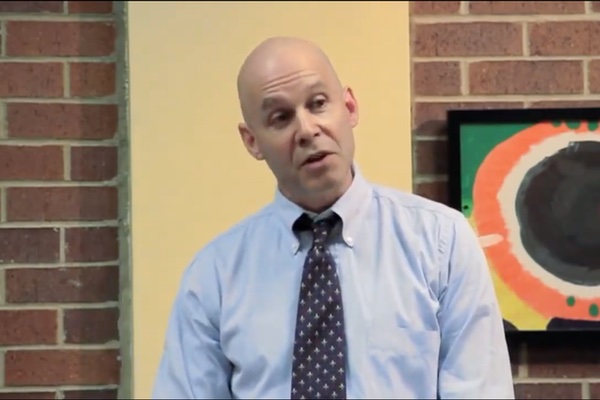By Randy Ross
 Writers and Web marketers have become disillusioned with social media because it can be a huge waste of time and you’re at the mercy of media companies scrambling to turn a profit. In many cases, simple e-mail marketing techniques can be a better use of your time. This article also includes instructions on how to send an e-mail request for help promoting your writing, book, or literary event.
Writers and Web marketers have become disillusioned with social media because it can be a huge waste of time and you’re at the mercy of media companies scrambling to turn a profit. In many cases, simple e-mail marketing techniques can be a better use of your time. This article also includes instructions on how to send an e-mail request for help promoting your writing, book, or literary event.Social Media Doesn’t Work
A recent article by Anne R. Allen, “7 Ways Authors Waste Time ‘Building Platform’ on Social Media,” spells out the problems with social media. Another article by Erik Deckers, “Social Media Stars Killed Social Media,” discusses how social media is nearing the end of it’s useful life. And of course there’s always my favorite book on the subject, “Social Media is Bullshit” by B.J. Mendelsohn.
My personal gripes with social media:
– Twitter is a torrent of crap: authors pitching their books to other authors, people inflating their numbers of followers using follow-back schemes. Crap, crap, crap. Am I going to stop using it? No, because agents and publishers may still want to see big numbers. I’m just reducing my time on it.
– Facebook now charges to reach your fans. I have 2,000 fans. When I post, I only reach 100 to 200 of them. To reach them all will cost me $10 — per post.
– Linked In keeps changing its rules. I used to post links to various groups to drive traffic. Now, I’ve been labeled a spammer and my posts go into the group moderator’s “Pending Submissions” folder. I also now receive e-mails from spammers requesting that I connect with them. When I do, I receive business solicitations. I’m guessing these are people who have paid for a premium account and are free to spam away.
E-Mail Marketing Made Somewhat Easy
The key advantage of e-mail over social media: with the former, you own the e-mail addresses and can contact people directly. With social media, you work hard to add followers – but you don’t have their addresses, the social media site owns them and can control your access to them.
Uses for e-mail:
– You know all those e-mail addresses of friends and co-workers you’ve been collecting for years? How about sending them all an update on your progress and ask for their help?
– Newsletters: I created signup windows for different topics related to my novel. When I write a blog on a topic of interest to them, I send send it as a newsletter.
– You know all those people who signed up for your blog, but for some reason didn’t confirm or verify their subscriptions? Add them to a list in Mailchimp, copy and paste your latest blog post into a blank newsletter and send it to them. I have a group of 30 people to whom I send each blog post. They all signed up, but for some reason never verified. (some are close friends.)
Tips and a Sample E-mail:
Here are tips for expanding your platform using e-mail marketing. I use Yahoo mail, so we’ll use that for the examples. These tips should work with other free Web-based e-mail programs.
In this example, I explain how to send an e-mail to friends and co-workers to request help promoting an upcoming writing event of mine.
1) Sign-up for free program like Mailchimp to manage your e-mail contacts and mailings
– Most Web-based e-mail programs, like Yahoo mail, etc., limit the number of people you can reach with a single e-mail. On Yahoo, it used to be 50. Recently, I tried to send a note to 30 people and it wouldn’t go through.
– Then upload your contacts from your e-mail to Mailchimp.
2) Cull Your E-mail Contacts
– Divide your contacts into two groups: People who will help you promote your writing and people who won’t help, but who are interested in your work.
– The people who will help you, should be contacted directly with a personal note. (this will likely be a very short list.)
– The people who are simply interested — likely a much larger number — will be uploaded to Mailchimp for a mass mailing. For this list, I included friends and former co-workers.
*Tip: post a note to Facebook, Twitter, and your other social media sites and ask folks if they want to get on your e-mail list. Allow them to e-mail you directly, or include a link to an e-mail sign up box. Mailchimp allows you to create an e-mail sign up box that you can post on your blog or Web site.
3) How to Ask for Help
– Ask directly for what you need. Don’t write a long-winded, puffy note with your request tacked on to the end of the e-mail like an afterthought.
– If you want contacts to e-mail their friends or post to their Twitter followers or share with their Facebook friends, make it easy for them: include sample text, so all they have to do to help is copy, paste, and post.
4) Frequency of E-mailings
– Remember you are NOT creating a weekly or even monthly newsletter. You are sending a semi-personal e-mail. You are asking for a favor or announcing some big news. Don’t pester peole with Facebook-like updates.
– I plan on sending a blast to these people a few times a year.
– However, you might want to include a link to your blog, so people can sign up — if they’re interested.
5) Anatomy of an E-mail: One I just sent with comments in [red and brackets]
– Basics: I included a quick summary so people know what e-mail is about without having to do a lot of reading.
– Direct request for help.
– My results: about half the people opened the e-mail. A few clicked on my links. A few sent me a direct e-mail offering to help. (Mailchimp has a tool that lets you see who opened it and what links they clicked on.
– I was surprised by which people offered to help and who couldn’t have cared less. Such is life!
The e-mail:
______________________________________________________
[Subject line] Professional update — plea for help!
Hi All,
Apologies in advance to anyone who has already seen this on Facebook or elsewhere. But d-day is approaching and I’m getting nervous!
I) Executive summary
[Quick summary, so folks can decide whether to read on or delete]
– I’ve been working on a novel for the last five years and will be circulating to agents in early 2014. The working title for the novel: “The Loneliest Planet.”
– I reworked excerpts from the novel into a one-man show called “The Chronic Single’s Handbook.” I’ll be performing the show at two fringe theater festivals next week (two shows in Portland, ME.) and in late July (five shows in D.C.)
[Direct request for help]
– Can you help me get the word out about the show?
*Mention to people you know who might go, post on Twitter, Facebook, etc. (Sample Tweets and links below.)
*Any help appreciated! My big fear: I’ve spent four months rehearsing and $1,200 on acting lessons to prepare for these festivals — and no one shows up to the shows.
[Making it easy for people to help: they just copy and paste]
Sample Tweet:
A friend will perform his show, The Chronic Single’s Handbook, in Maine (6/29-30) & D.C. (7/19-28) Please go or RT http://ow.ly/meo8v
Sample Facebook Post:
A friend will perform his one-man comedy play, The Chronic Single’s Handbook, in Maine (6/29-30) & D.C. (7/19-28). The play is about a never-married guy who takes a trip around the world looking for the woman of his dreams. Please go or share. http://ow.ly/meo8v
II) More Detail than you want
[More info, if they’re interested]
Randy Ross is a Boston-based writer, web consultant, and former executive editor for PC World magazine.


